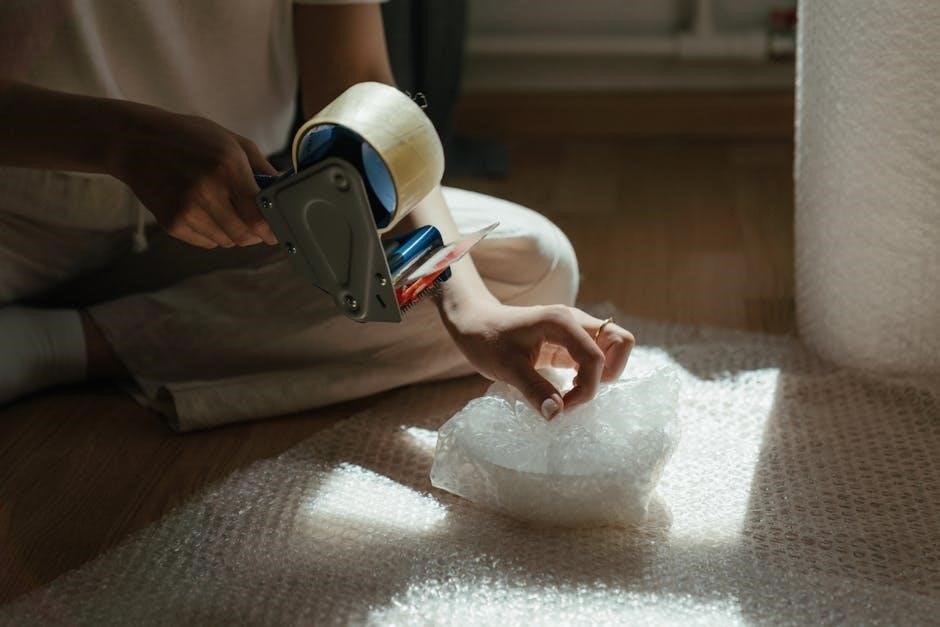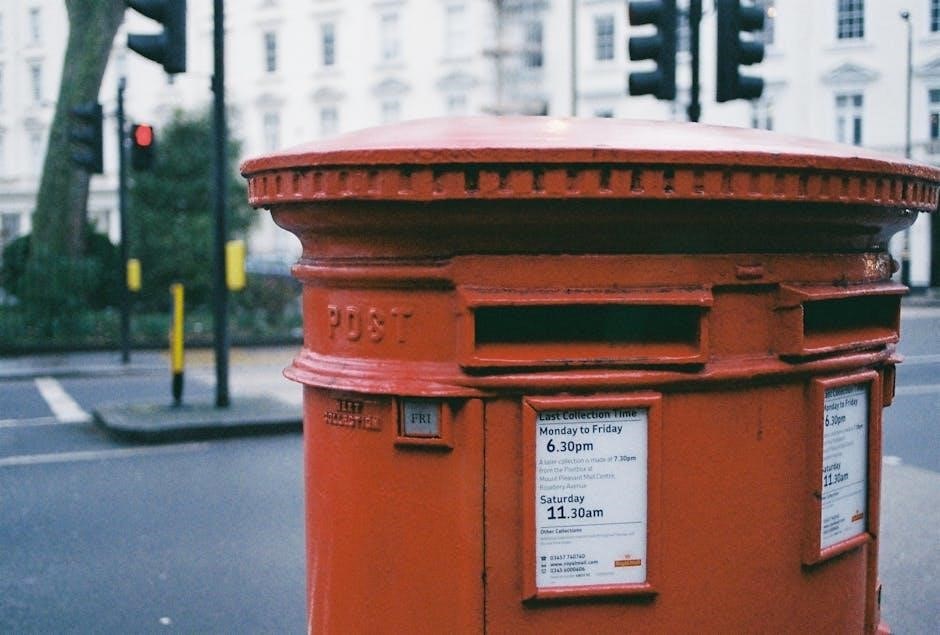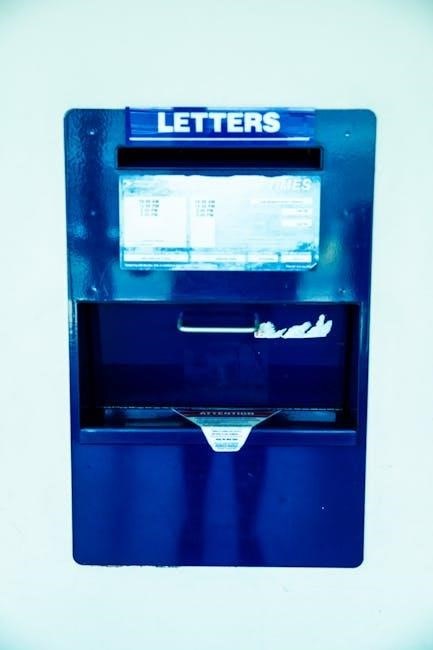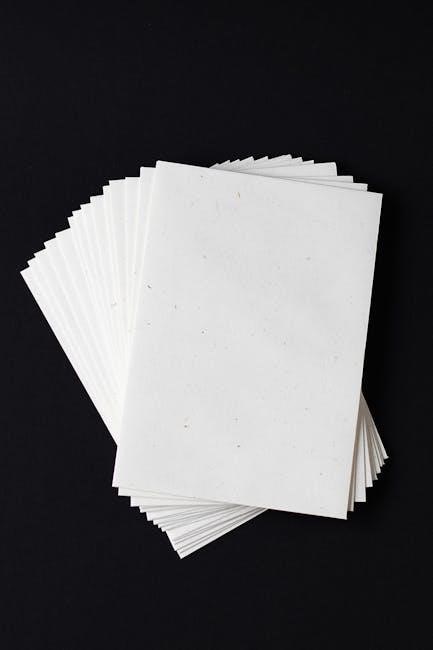Immediate Post-Procedure Period (Days 1-4)
Patients may experience mild discomfort and congestion during the first few days. Using saline sprays and applying antibiotic ointment as directed can help manage these symptoms effectively.
1.1 Common Discomfort and Congestion
Immediately after the procedure, patients often experience mild discomfort and nasal congestion. This is normal and temporary, typically improving within a few days. Using saline mists or sprays can help keep the nasal passages moist, reducing irritation. Elevating the head while sleeping may also alleviate morning congestion. It’s important to avoid activities that could exacerbate symptoms, such as blowing the nose forcefully, to ensure proper healing during this critical period.
1.2 Initial Care Tips: Saline Sprays and Antibiotic Ointments
Using saline sprays 3-4 times daily helps keep nasal passages moist and promotes healing. Apply prescribed antibiotic ointment twice a day to reduce the risk of infection. These steps are crucial in the first few days to manage discomfort and support recovery. Always follow your healthcare provider’s specific instructions for proper usage and frequency to ensure optimal results and minimize complications during the healing process.

First Follow-Up Visit (Around Day 7)
The first follow-up visit around Day 7 is crucial for evaluating healing progress and removing any remaining material. It ensures proper recovery and addresses any concerns.
2.1 What to Expect During the Visit
During the first follow-up visit, your healthcare provider will assess the healing progress, remove any scabs, and check for proper nasal passage clearance. This ensures the procedure’s success and addresses any concerns or complications. Patients should be prepared to discuss their recovery experience and any symptoms they’ve encountered. The visit is a critical step in confirming that the healing process is on track and that the expected outcomes are being achieved.
2.2 Importance of Follow-Up in Healing Process
Follow-up visits are crucial for monitoring the healing process after the Vivaer procedure. During these visits, your healthcare provider will assess the progress, remove any scabs, and ensure nasal passages are clear. This helps prevent complications and ensures the procedure’s success. The visit also allows you to discuss any symptoms or concerns, which is essential for managing your recovery effectively. Addressing any issues promptly helps ensure the best possible outcomes and a smooth recovery.

Managing Discomfort and Pain
Discomfort and pain can be managed with over-the-counter pain relief options and saline mists. These methods help reduce congestion and promote a smooth recovery process.
3.1 Over-the-Counter Pain Relief Options
Over-the-counter pain relief options, such as acetaminophen or ibuprofen, can effectively manage mild discomfort and pain following the procedure. These medications are typically sufficient, as prescription painkillers are rarely needed. It’s important to follow the recommended dosage and consult your healthcare provider if pain persists. Additionally, saline sprays can help keep the nasal area moist, reducing irritation and supporting the healing process during the initial recovery phase.
3.2 Role of Saline Mists in Reducing Discomfort
Saline mists play a crucial role in reducing post-procedure discomfort by keeping the nasal passages moist. Regular use helps alleviate congestion and irritation, promoting healing. Patients are advised to spray 3-4 times per nostril, multiple times daily, to maintain humidity and prevent crusting. This simple yet effective practice not only eases breathing but also supports the recovery process, ensuring a smoother transition to long-term comfort and symptom relief.

Resumption of Regular Activities
Most patients resume daily activities within 24-48 hours, though heavy exertion should be avoided. Gentle exercises can typically restart the following day, with congestion fluctuating in the first weeks.
4.1 Returning to Daily Activities Within 24-48 Hours
Most patients can resume normal activities, including work or school, within 24-48 hours post-procedure. Discomfort is typically minimal, allowing a smooth transition back to daily routines. Light exercise can often restart within a day, though heavy exertion should be avoided to prevent complications. Avoiding activities that involve heavy lifting, bending, or straining is recommended during this period. Patients should follow specific guidance from their healthcare provider to ensure a safe and effective recovery process.
4.2 Exercise Restrictions: First Week Guidelines
During the first week, patients should avoid heavy lifting, bending, or straining. Strenuous activities and exercises that increase heart rate or blood pressure should be postponed. Light walking is generally permissible, but high-intensity workouts should be avoided to minimize the risk of complications. Patients are advised to resume exercise gradually, ensuring they do not experience discomfort or bleeding. It’s important to follow specific guidelines provided by the healthcare provider to ensure a smooth recovery and prevent any setbacks.

Nasal Care and Hygiene
Keep the nasal area clean and avoid blowing your nose for 5 days post-procedure. Use saline sprays to maintain moisture and apply antibiotic ointment as directed.
5.1 Avoiding Nose Blowing for 5 Days Post-Procedure
Avoid blowing your nose for at least five days after the procedure to prevent bleeding or dislodging scabs. If necessary, blow gently to minimize discomfort and maintain healing.
5.2 Proper Use of Recommended Nasal Sprays and Rinses
Use saline sprays or rinses as directed to keep the nasal passages moist and promote healing. Gently spray 3-4 times per nostril, 4-5 times daily, to prevent crusting and discomfort. This helps maintain a clean environment for recovery and reduces the risk of complications. Adhere to your healthcare provider’s instructions for optimal results and a smoother recovery process.

Common Side Effects and Expectations
Common side effects include scabbing inside the nose and fluctuating congestion levels. These are normal parts of the healing process and typically resolve within a few weeks.
6.1 Scabbing Inside the Nose and Its Management
Scabbing inside the nose is a common experience after the Vivaer procedure, typically occurring where the device was applied. To manage this, use saline sprays to keep the nasal passages moist and facilitate healing. Avoid picking or manipulating the scabs, as this can delay recovery or cause bleeding. Applying prescribed antibiotic ointment as directed can also help promote healing and reduce the risk of infection. Proper care ensures scabs dissolve naturally within a few weeks, allowing the nasal tissue to heal smoothly.
6.2 Fluctuating Congestion Levels in the First Few Weeks
After the Vivaer procedure, patients may experience fluctuating congestion levels for several weeks. This is a normal part of the healing process. To manage this, using saline sprays regularly can help keep nasal passages moist and reduce discomfort. Elevating the head while sleeping may also minimize morning congestion. While some days may feel more congested than others, these symptoms typically subside within a few weeks. Most patients report significant improvement in congestion by around six weeks post-procedure.

Sleeping Position Recommendations
Sleep with your head elevated on 2-3 pillows to reduce morning congestion. This position helps minimize swelling and promotes healing during the recovery period.
7.1 Elevating the Head to Minimize Morning Congestion
Elevating your head with 2-3 pillows reduces morning congestion by preventing fluid accumulation. This simple adjustment promotes drainage, alleviates swelling, and enhances comfort during the healing process.
7.2 Best Practices for Sleeping Post-Procedure
Sleeping on your back with your head elevated using 2-3 pillows minimizes congestion and promotes healing. Avoid lying flat to reduce swelling and discomfort. Gently blowing your nose, if necessary, is acceptable, but avoid forceful blowing. Use saline sprays or rinses before bed to keep nasal passages moist and clear. Adhering to these practices ensures a more comfortable recovery and helps maintain the treatment area during the healing process.

Returning to Work or School
Most patients can return to work or school within 24-48 hours, but some may need up to a week. Managing recovery alongside daily tasks is essential for healing.
8.1 Typical Timeline for Returning to Work/School
Most patients can resume work or school within 24-48 hours post-procedure. Some may need up to 7 days, depending on discomfort levels. Return gradually, avoiding strenuous tasks initially. Light duties are recommended to ensure proper recovery. Adjustments may be needed to manage nasal care and avoid complications during the healing process. Follow post-operative instructions to facilitate a smooth transition back to daily responsibilities.
8.2 Managing Recovery While Resuming Daily Responsibilities
Balancing recovery with daily responsibilities is crucial for a smooth healing process. Patients should continue using saline sprays and antibiotic ointments as directed to maintain nasal health. Gentle nose blowing, if necessary, and avoiding strenuous activities are recommended. Following post-operative care instructions helps manage discomfort and promotes healing. Most individuals can return to work or school within a few days to a week, ensuring minimal disruption while allowing the body to recover fully.

Symptom Improvement Timeline
Symptoms typically show noticeable improvement within 2-4 weeks post-procedure, with maximum benefits realized around 6-8 weeks as healing progresses and nasal passages stabilize effectively.
9.1 Early Improvements: 2-4 Weeks Post-Procedure
Patients typically begin noticing improvements in symptoms like reduced nasal congestion and enhanced breathing within 2-4 weeks post-procedure. These early improvements are due to the healing process and the body’s adaptation to the treated nasal passages. While some may experience benefits sooner, others may take up to 4 weeks to see significant changes. Consistency with post-operative care, such as using saline sprays and avoiding nose blowing, plays a crucial role in optimizing these early results and ensuring a smooth recovery.
9.2 Maximum Benefits: 6-8 Weeks Post-Procedure
Most patients experience the maximum benefits of the VivAer procedure between 6-8 weeks after treatment. By this time, the nasal passages have healed sufficiently, leading to significant improvements in breathing and a reduction in congestion. Proper post-operative care, such as avoiding nose blowing and using recommended nasal sprays, contributes to these outcomes. Patients typically report optimal results, with symptoms like stuffiness and nasal obstruction noticeably diminished, allowing for easier breathing and improved quality of life.

Full Recovery and Final Results
Full recovery is typically achieved by 12 weeks, with final results showing significant improvement in nasal breathing and reduced congestion, enhancing overall quality of life.
10.1 Understanding the 6-8 Week Healing Process
The 6-8 week healing process is crucial for optimal results. Scabbing inside the nose typically resolves by 6 weeks, with congestion gradually improving. Patients may notice continued healing progress, and while some mild discomfort may persist, adherence to post-op care ensures proper recovery. By 8 weeks, most patients experience significant symptom relief, setting the stage for long-term benefits.
10.2 Expectations for Final Outcomes at 12 Weeks
By 12 weeks, patients typically experience peak benefits, with significant improvement in nasal breathing and reduced congestion. Symptoms such as obstruction and discomfort usually resolve, leading to long-term relief. Final outcomes are stable, providing the expected results of the Vivaer procedure. Most patients achieve lasting benefits, with nasal functionality greatly enhanced compared to pre-procedure conditions.